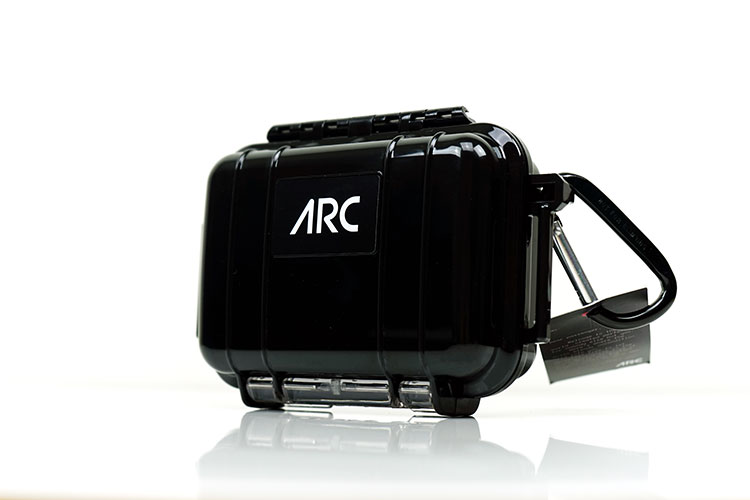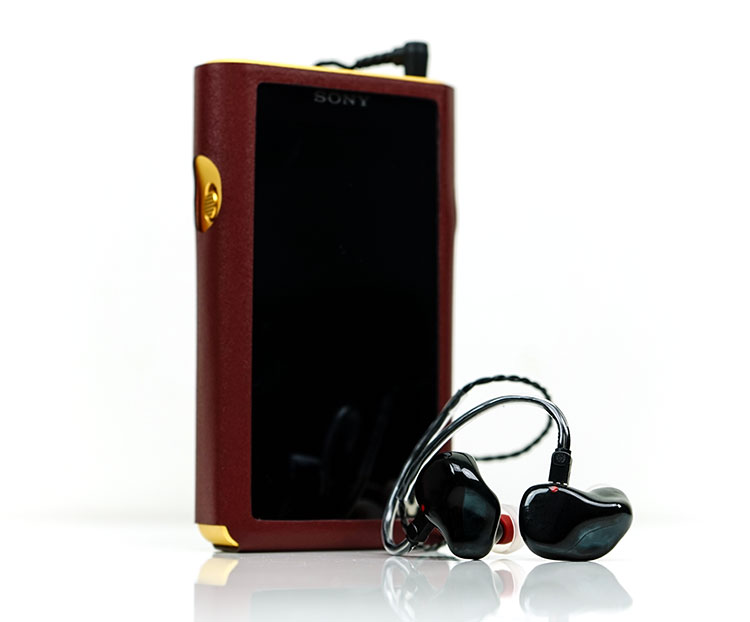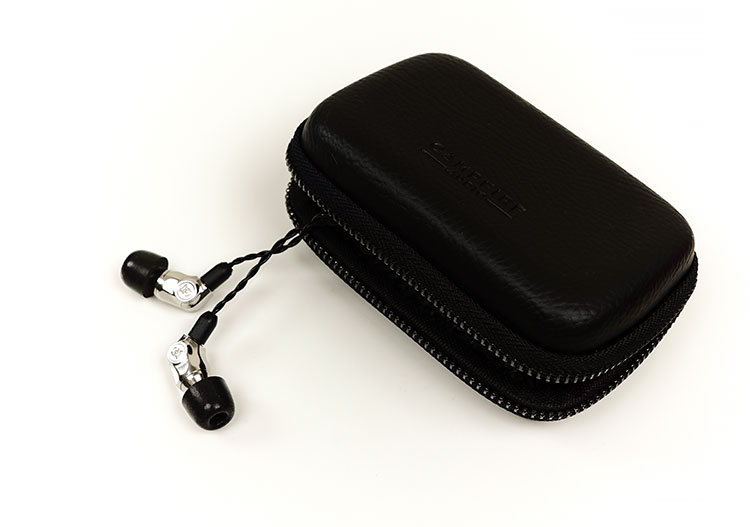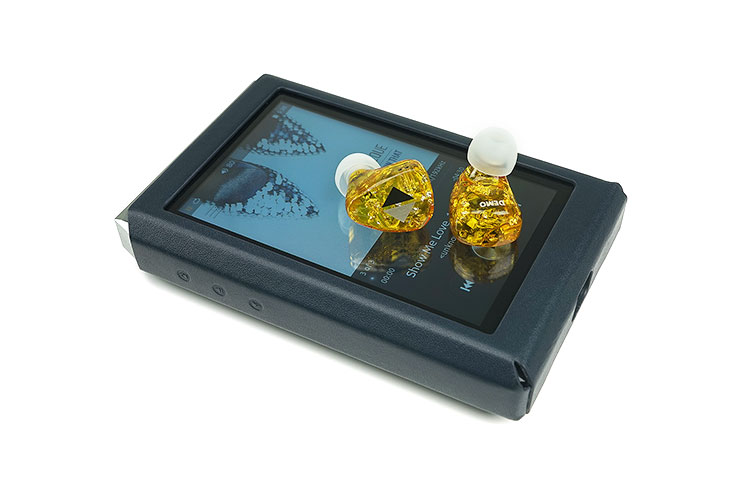Sound Impressions
Summary
For those thinking this is a Neptune in a black disguise, you will be very much mistaken. Whilst you could argue that the Pollux deliver a fairly prominent upper midrange like the Neptune or the YK1 I can’t call it out as an outright N-shaped presentation. The tonality is decidedly clean, neutral to slightly bright with a tuning bias focused on upper mids presence and lower treble energy.
The Pollux has one of the most neutral and linear low-ends out of any single BA driver IEM I have tested to date. Even the Neptune has some elevation and warmth from 200-500Hz. Not so with the Pollux which remains dead straight and decidedly neutral save for a minor drop around 200Hz which is only present in this demo unit.
The Pollux exhibits a decidedly elevated 1-2k region as well as heightened lower treble with a particular emphasis on a 6-7k peak. This is an IEM with a strong focus on vocals presence.
The odd-harmonic infusion from the elevated 7k peak on the Pollux also contributes to a neutral and clean-sounding instrumental timbre. The Pollux will deliver on speed and clarity over low-end weight and body.
The most intriguing aspect of the Pollux signature though is a lack of hardness in its attack. With these types of boosted treble FR’s, you expect it to all sound a bit splashy and harsh. Not so with the Pollux, it is much smoother sounding than I expected so I do not find the signature fatiguing in the slightest.
Staging
I would hesitate to call the presentation super airy as there is not a huge emphasis beyond 7k but the headroom is somewhat better than the Neptune’s upper treble which is a touch more muted sounding by comparison.
Perhaps the only single BA to extend better than the Pollux is the CA Comet which has some residual energy from 8-10k. However, the Comet dips much harder from 5-10k and can sound a little lacking in presence by comparison. It is rare you get a single BA design that can really deliver the goods at both ends of the frequency range.
There is also a lack of slam and perceptible depth to Pollux’s staging. It is not that it is rolled off but the lack of emphasis means it is not going to add too much weight and power to instrumental timbre.
What it does have is a nice sense of width and detail with good left-right separation. Nothing overly stretched but definitely a decent level of instrumental separation and excellent clarity for a single BA soundstage.
Bass
Depending on how you like your bass this is either a weak spot or strength in the Pollux signature. Now there is a slight difference between the demo unit supplied and the custom unit. I am told that the custom unit is a little more elevated from 200Hz down to 30Hz and very linear all the way up to 600Hz.
The demo units SpinFit silicone come close but drop by 1-2dB sub-200Hz so it is not quite as linear or as powerful sounding but it is not a huge gap.
Either way, this is not a powerful sounding low-end. This is a delivery fairly typical of a single balanced armature with a greater emphasis on speed, staying fairly tight and well-controlled. Unlike the Neptune and more so the Comet, it does not have any mid-bass bias either so if there is any warmth it is going to come more from the elevation that starts in the upper bass and lower mids.
Mids
The boosting of the Pollux mids starts right in the lower mids and peaks around 2k before it drops down at 4k. The peak is around 5-6dB so it is not a huge gap but it will sound accentuated because of the very flat low-end.
Vocals are forward sounding with excellent clarity and a neutral body. To be honest the Pollux sounds excellent with vocals, particularly slightly higher-pitched female vocals. The attack is just on the slightly soft side with very little perceptible edginess.
This is the type of IEM that will really excel with acoustic genres. That lovely control on the vocal presence combined with a fairly neutral instrumental timbre is a big strength for the Pollux.
Husky jazz-style vocal recordings such as Halie Loren and meatier soul artist voices like Iyeoka sound vivid and very clear. Stevie Nick’s Edge of Seventeen (remastered) I could listen to all day on the Pollux.
Sibilance? Not inherently so. It will not disguise it if it is a bright recording but overall the Pollux did a great job controlling sibilance on vocal recordings. There is a 2-4k dip that takes a little sting out of percussion presence and helps lift vocals a bit more to the fore. Not enough to rob it off air but enough to push them a little further back in the mix.
Treble
From 4-6k the lower treble of the Pollux is fairly neutral before it elevated by around 6-7dB at the 7k marker. Yes, this is normally where a peak is not wholly desirable but on the Pollux, it doesn’t sound overly harsh or decidedly unbalanced sounding. It is fairly light in body and retains more of an ethereal quality to its treble performance.
I suspect a little of that has to do with the stock OFC cable which is usually a relaxed sounding cable as well as having a tendency to mute high frequencies a bit more than most.
Another reason why you do not hear any splashiness or sharpness in the treble tone is the dip at 4-6k combined with a roll-off post 7k which acts like a little blocker on too many odd-harmonic overtones creeping into the Pollux higher-pitched timbre and vocals.
A little less gain over the percussion presence combined with a softening of the upper treble retains a nice degree of clarity without sounding harsh.
Synergy
Efficiency
The Pollux is rated at 28Ω and we believe between 109-113dB sensitivity. That’s a nice medium level of efficiency almost on par with the likes of the 30Ω Noble X for impedance. You should not have any issues driving this from smartphones to DAPs like the HiBy R3/FiiO M7 and small portable amps such as the FiiO Q1 MKII.
This is the type of performance that should also not unduly worry users of the HiBy Music R6 with that 10Ω output impedance. There should not be any low-z skew when paired with the Pollux.
On paper, it is also a little more sensitive and easier to drive than the Campfire Audio Comet which is rated at 48Ω and 97dB. Single BA IEMs that should be slightly easier to drive include the qdc Neptune at 10Ω.
True enough, when powered from a fairly moderate amp such as the HiBy Music R3 there was a gap between the three in terms of volume. A rough volume matching exercise in low gain had the R3 on 47 steps for the Pollux, 39 on the Neptune, and the Comet on 56.
Noise
This is an excellent performer for noise. You will hear virtually no background hiss on any DAP known for a high noise floor such as the FiiO X3iii and X5iii. Portable amps of moderate power such as the ALO Audio V5 have the faintest of noise levels but nothing distracting.
You can even try ALO’s Continental Dual Mono on low gain and get a very respectable noise performance when paired with the Pollux.
Pairings
Preferences
The Pollux’s presentation is neutral to slightly bright but nothing harsh or overly sibilant sounding. To retain that sound I had a preference for DAPs with a fairly smooth signature over one that is known to be decidedly neutral, aggressive or bright sounding.
Having said that some high-end DAPs unexpectedly played out very well indeed with the Pollux despite having what I consider a neutral signature. DAPs such as the AK240 won’t exactly fatten up the Pollux low-end but the treble stayed really clean and clear with some fantastic levels of resolution.
Preferred DAPs
DAPs that paired well with the Pollux for my tastes included the iBasso DX150 and the Opus#3. The DX150 with its natural to slightly warm sounding signature and excellent dynamics from its stock AMP 6 card yielded a little more body and texture to the Pollux presentation.
The Opus#3 added an airier sound that paired well with the Pollux’s upper mids and top-end strengths. It also has this slightly organic tone to it that I loved with the Pollux for vocal performances.
Select Comparisons
qdc Neptune
$199
Technical
The Neptune is qdc’s entry-level single BA universal IEM rated at 10Ω and 104dB. As tested it was a little bit easier to drive than the Pollux out of low-powered sources such as smartphones and DAPs such as the HiBy Music R3.
The Neptune is purely universal whereas the Pollux is purely custom at this point in time. I can only speak with reference to the demo but I found the seal to be a bit better on the Pollux demo unit due to the longer nozzle offering a deeper fit.
My preference is always for a deeper fit as there is less focus on the tip having to do the majority of the seal. Both have a custom universal build so they are very comfortable in the ear.
One of the big differentiators between the two is the cable. Both have a 0.78mm 2-pin fitting. However, the Neptune is reversed making it challenging to cable roll. It is simply not worth it unless your cable provider can reverse the pin alignment for you. The Pollux is just fine and can take any 2-pin you want to throw at it.
Performance
Both are excellent for vocals and for a time I would always recommend the Neptune as the go-to for a nice vocal performance for single BA IEMs. The Pollux vocal presentation is just slightly different from the Neptune, in fact, I would say slightly more accurate and natural sounding.
The Neptune low-end has a degree of roll-off and a mid-bass that is a touch more elevated than the Pollux. It can hit a little harder with that mid-bass boost. It also dips in the lower mids whereas the Pollux starts its elevation to 1k in the exact same area.
That lack of dip is important because otherwise, the Pollux instrumental timbre could have sounded way too lean due to the flatter low-end. It is not as warmed up as the Neptune and doesn’t have the same amount of body but it is the more coherent of the two to my ears.
The Neptune, by contrast, has the more euphonic tone of the two but it lacks a bit of treble energy and air compared to the Pollux. The Pollux just has more lower-treble energy which delivers a little more “edge” and clarity, especially on acoustics and stringed timbre.
Preferences
Personally, I think the Pollux is the more accurate and coherent sounding of the two for vocals and stringed instruments with a nice balance between clarity and smoothness. The Neptune tends to deliver a slightly more euphonic tone with the greater mid-bass weight which may prove more suitable for genres that require some low-end impact which is Pollux’s weakness.
Campfire Audio Comet
$199
Technical
The Comet is a uniquely designed single BA entry-level IEM from Campfire Audio. It is rated at 48Ω and 98dB. In our testing we found the Pollux to be more sensitive and needs less power than the Comet on weaker sources such as smartphones and DAPs.
The Comet is channel-agnostic meaning the cable determines left and right rather than the drivers. They are also fit agnostic in a sense you can wear them over the ear or straight down though the core design seems to prefer straight down.
The Pollux driver units are shaped for left and right specific and are not channel-agnostic. Since they come in a custom format primarily the exact fit to each ear means they are not fit agnostic and can only be worn over the ear.
The Comets use MMCX connectors with a copper Litz lightweight black 12m cable and right angle 3.5mm jacks. The Pollux uses regular 2-pin 0.78mm connectors, an OFC Plastics One 4-wire 1.2m cable, and also has right-angle 3.5mm jacks.
Performance
The Comet is very different from the Pollux in terms of timbre and presentation. This is a more musical signature with a stronger emphasis on a thicker deeper low-end with plenty of warmth, a stronger presence region, and an upper treble with good sparkle and extension.
It pretty much dips in a lot of areas the Pollux is boosted in and vice versa. This is the type of presentation that delivers a lot of depth and height but sounds a bit less focused and more diffuse in the mids.
The Pollux, in turn, is much more vocal-focused with a cleaner presentation and more neutral timbre but lacks the depth and power of the Comet and sounds a lot more intimate as a result. It does have more lower-treble energy so it is the brighter of the two but it does not have the same level of final octave energy so slightly less sparkle.
Preferences
The preferences here are as clear as night and day. Grab the Comet is you want more power, a darker tone, and a grander soundstage but less focus on vocals and mids. Get the Pollux if you want the complete opposite, i.e.l intimate vocal focused clean sounding presentation.
Aya Audio Nightingale YK1
$250
Technical
The Nightingale YK1 took our local scene by storm in the summer of 2017. This is a single BA driver 2-pin connector universal IEM with a semi-custom bright color design from Vietnam.
I have to admit I am a sucker for the yellow finish of the YK1 though I doubt you get much yellow in space for ARC to work on unless they intend to release something based on a cartoon sun.
That being said the form factor of the Pollux demo is more accurate and better shaped. This allows a bigger shell to actually feels more comfortable whereas Aya Audio’s good but not as accurate shape is smaller in the ear to avoid pressure points. The deeper nozzle of the Pollux demo is the better of the two for sealing.
The YK 1 is rated at 24Ω and 102dB and is slightly less sensitive than the Pollux but marginally easier to drive. In real-world testing with our selected review DAP, the HiBy Music R3 these paper specs were fairly spot on. The gap in volume was about 4-5 steps between the two with the YK1 the less sensitive of the two.
Performance
The N-shaped presentation of the YK1 is closer in tone to the Neptune and a little warmer sounding than the Pollux. Its low-end rolls off a little more than the Pollux’s super linear line but it also has a bit more mid-bass warmth and elevation which in turn offers more impact and body in its bass response. The Pollux will sound the more neutral of the two for bass.
Like the Neptune, the YK1 will dip a little going into the lower mids whereas the Pollux has a more coherent and flatter transition with an actual rise starting around 700Hz and beyond. Of the two the instrumental timbre on the Pollux is actually the more accurate of the two but it lacks the warmth and euphonics of the YK1’s mid-bass elevation so not quite as much body.
The Pollux is boosted more in the 1-2k range compared to the YK1’s 2-3k boost. I prefer the Pollux mid-range 1-2k emphasis. You get a wider range of vocal pitches being pushed forward. The 2-3k pitch of the Yk1 impacts a little more on some percussion and higher-pitched female vocals but the net result is a fair few vocals are not quite as front and center as the Pollux.
The YK1 does not have the same amount of 7k treble emphasis as the Pollux so you will miss a bit of air and energy there which the Pollux has. Percussion harmonics on the Pollux will sound cleaner and with slightly more presence. Neither have a great upper treble extension with cursory 10-12k nudges for that “hi-fi” sound.
Our Verdict
Ok, so the ARC Pollux has just outflanked the YK1 and Neptune for my recommended single BA IEM for vocal lovers. They sound a touch more neutral and cleaner than both of them and excel with acoustic arrangements and pretty much any soulful vocal you can throw at it.
It will fall down when the music gets too complex or lively. I just do not think they are tuned to be colorful musical champs like the Comet. In fact, they are very complimentary for Comet lovers who want a second IEM to just relax with quieter or more delicate tracks. That lack of bass power and body will put off those wanting to pair this with hard-hitting rock and EDM.
Price-wise for a custom monitor it is a win for me but I do hope they consider converting this demo unit into a fully-fledged semi-custom universal version. The long nozzle and SpinFit choices are excellent for isolation and comfort. The price could well be even cheaper which would be perfect for impatient audiophiles who want a taste of what Thailand can offer right away.
Arc Pollux Specifications
- Driver Type: Knowles Single Full-Range Balanced Armature Driver
- Connector: 2-pin Connector
- Impedance: 28 Ohms
- Frequency Response: 20Hz- 22 Khz










